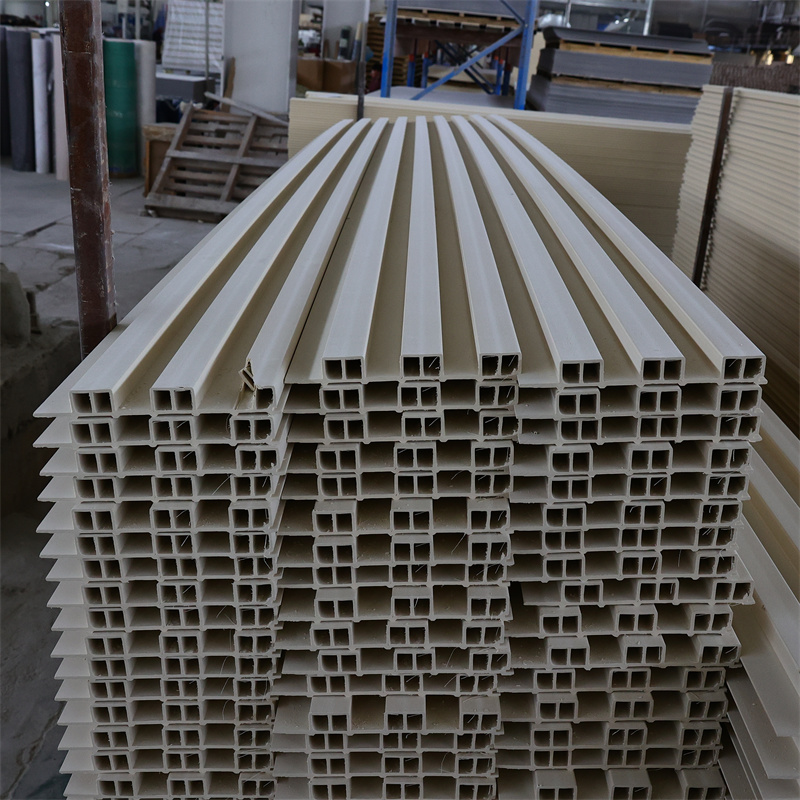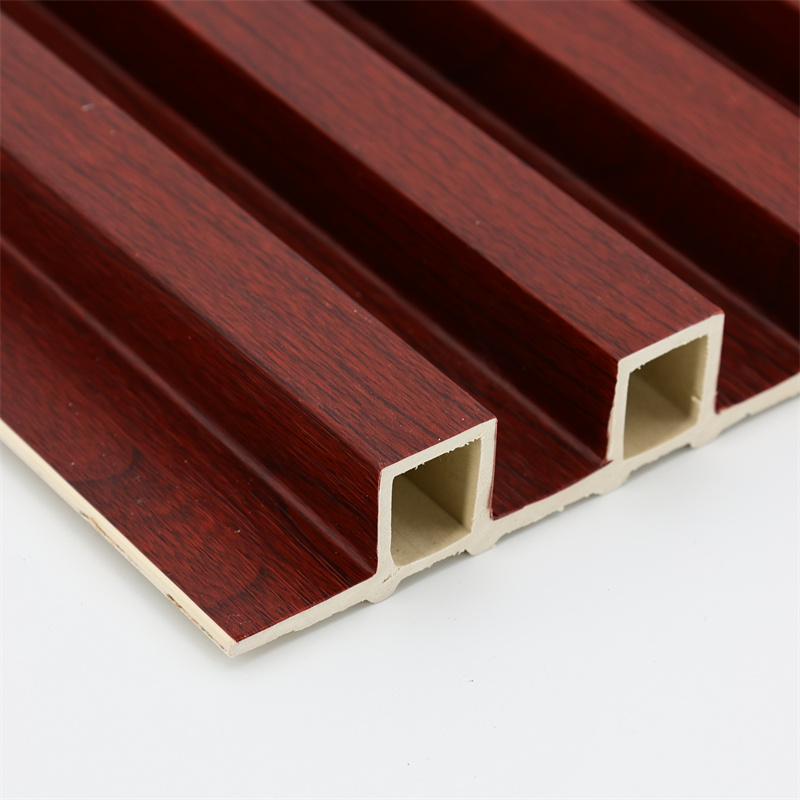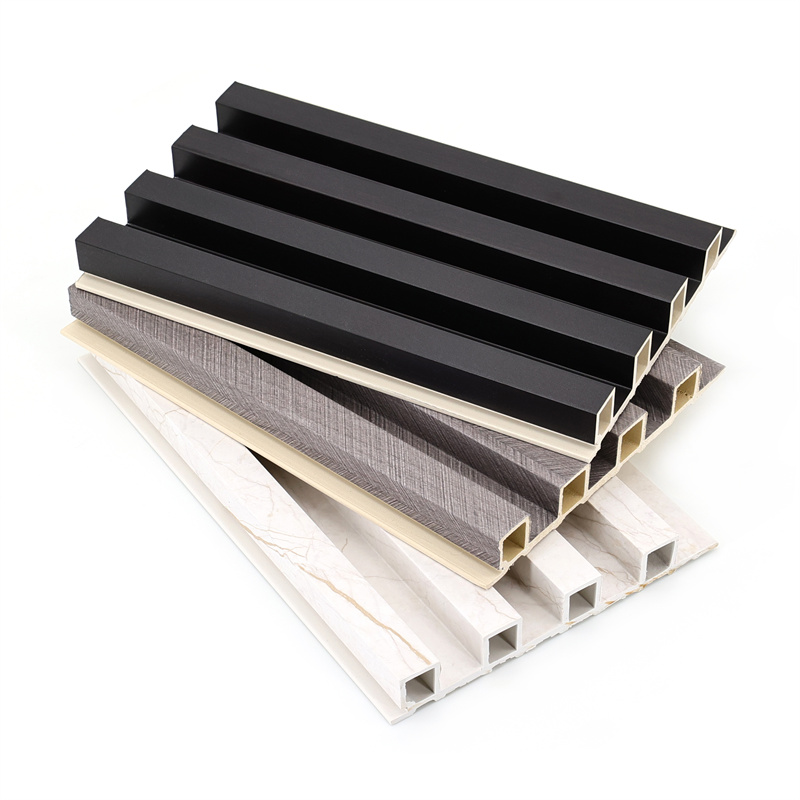Durability and longevity are crucial factors to consider when selecting building materials, especially for applications such as wall panels that are exposed to various environmental stresses.
In recent years, Wood-Plastic Composite (WPC) wall panels have gained significant popularity due to their exceptional durability and longevity.
This essay delves into the key aspects that contribute to the durability of WPC wall panels, including their resistance to moisture and rot, weather resistance, impact resistance, and long-term performance.

I. Resistance to Moisture and Rot:
A. Moisture Resistance: WPC wall panels are engineered to resist moisture, making them highly suitable for applications in wet or humid environments.
The combination of wood fibers and plastic polymers creates a material that is inherently resistant to water absorption.
Unlike traditional wood panels that are susceptible to swelling, warping, and decay when exposed to moisture, WPC wall panels maintain their dimensional stability, structural integrity, and aesthetic appearance over time.
B. Rot Resistance: Due to their composition, WPC wall panels are inherently resistant to rot, decay, and fungal growth.
Unlike natural wood, which provides a favorable environment for microorganisms to thrive, the plastic component in WPC panels acts as a barrier, preventing the growth of mold and fungi.
This rot resistance ensures the long-term performance and durability of WPC wall panels, even in damp or high-humidity environments.
II. Weather Resistance:
A. UV Resistance: WPC wall panels are formulated to withstand prolonged exposure to ultraviolet (UV) radiation from the sun.
Through the addition of UV stabilizers and pigments during the manufacturing process, these panels are protected against color fading, surface degradation, and brittleness caused by UV rays.
The UV resistance of WPC panels ensures their aesthetic appeal and structural integrity over extended periods, even in areas with high sun exposure.
B. Thermal Expansion and Contraction: WPC wall panels exhibit minimal thermal expansion and contraction compared to traditional materials.
The combination of wood fibers and plastic polymers results in a material with reduced sensitivity to temperature fluctuations.
This characteristic minimizes the risk of warping or distortion of the panels, ensuring their long-term dimensional stability and overall durability.

III. Impact Resistance:
WPC wall panels are engineered to withstand impact and external forces, making them highly durable in high-traffic areas or locations prone to accidental damage.
The composition of wood fibers and plastic polymers provides enhanced structural strength and resilience, reducing the risk of cracking, chipping, or denting.
This impact resistance ensures that WPC wall panels maintain their integrity and appearance, even in demanding environments.
IV. Long-Term Performance:
A. Low Maintenance Requirements: WPC wall panels are designed to be low maintenance, reducing the need for frequent repairs and refinishing.
Unlike natural wood panels that require regular sealing, painting, or staining, WPC panels retain their appearance and structural integrity with minimal upkeep.
Simple cleaning with mild soap and water is often sufficient to maintain the panels’ aesthetic appeal, making them a practical choice for long-term durability.
B. Longevity and Lifecycle Assessment: WPC wall panels have been subjected to rigorous testing and evaluation to determine their expected lifespan and performance.
Manufacturers conduct extensive research to ensure that the panels meet industry standards and surpass customer expectations.
These panels are engineered to withstand the test of time, providing reliable and durable wall cladding solutions that can last for decades with proper installation and maintenance.
WPC wall panels exemplify exceptional durability and longevity, making them an ideal choice for various construction applications.
Their resistance to moisture and rot, weather resistance, impact resistance, and long-term performance contribute to their overall durability.
WPC panels offer a reliable and sustainable alternative to traditional wall materials, ensuring structural integrity, aesthetic appeal, and reduced maintenance requirements.
As the construction industry continues to prioritize durability and longevity, WPC wall panels will play a pivotal role in creating resilient and long-lasting buildings for future generations.

In conclusion, the durability and longevity of WPC wall panels make them an excellent choice for sustainable construction projects.
These panels exhibit remarkable resistance to moisture and rot, ensuring their structural integrity and aesthetic appeal even in damp or high-humidity environments.
Their weather resistance properties, including UV resistance and minimal thermal expansion, contribute to their ability to withstand the elements and maintain their dimensional stability over time.
Furthermore, the impact resistance of WPC wall panels makes them highly durable in high-traffic areas, reducing the risk of damage and extending their lifespan.
Their low maintenance requirements save time, effort, and costs associated with frequent repairs and refinishing.
Additionally, the long-term performance of WPC panels has been extensively researched and tested, ensuring their reliability and longevity.
By choosing WPC wall panels, architects, builders, and homeowners can confidently select a material that not only provides exceptional durability but also contributes to sustainable construction practices.
WPC panels offer an eco-friendly alternative to traditional wall materials, as they are composed of recycled materials and have a reduced environmental impact.
In an industry that prioritizes longevity, WPC wall panels stand out as a durable and resilient solution.
Their ability to withstand the test of time, combined with their aesthetic appeal and low maintenance requirements, make them a practical and cost-effective choice for a wide range of construction projects.
As the demand for sustainable and durable construction materials continues to grow, WPC wall panels are expected to play an increasingly important role in the industry.
By embracing these panels, stakeholders in the construction sector can contribute to the creation of buildings that are not only aesthetically pleasing but also built to last,
promoting a more sustainable and resilient built environment for future generations.